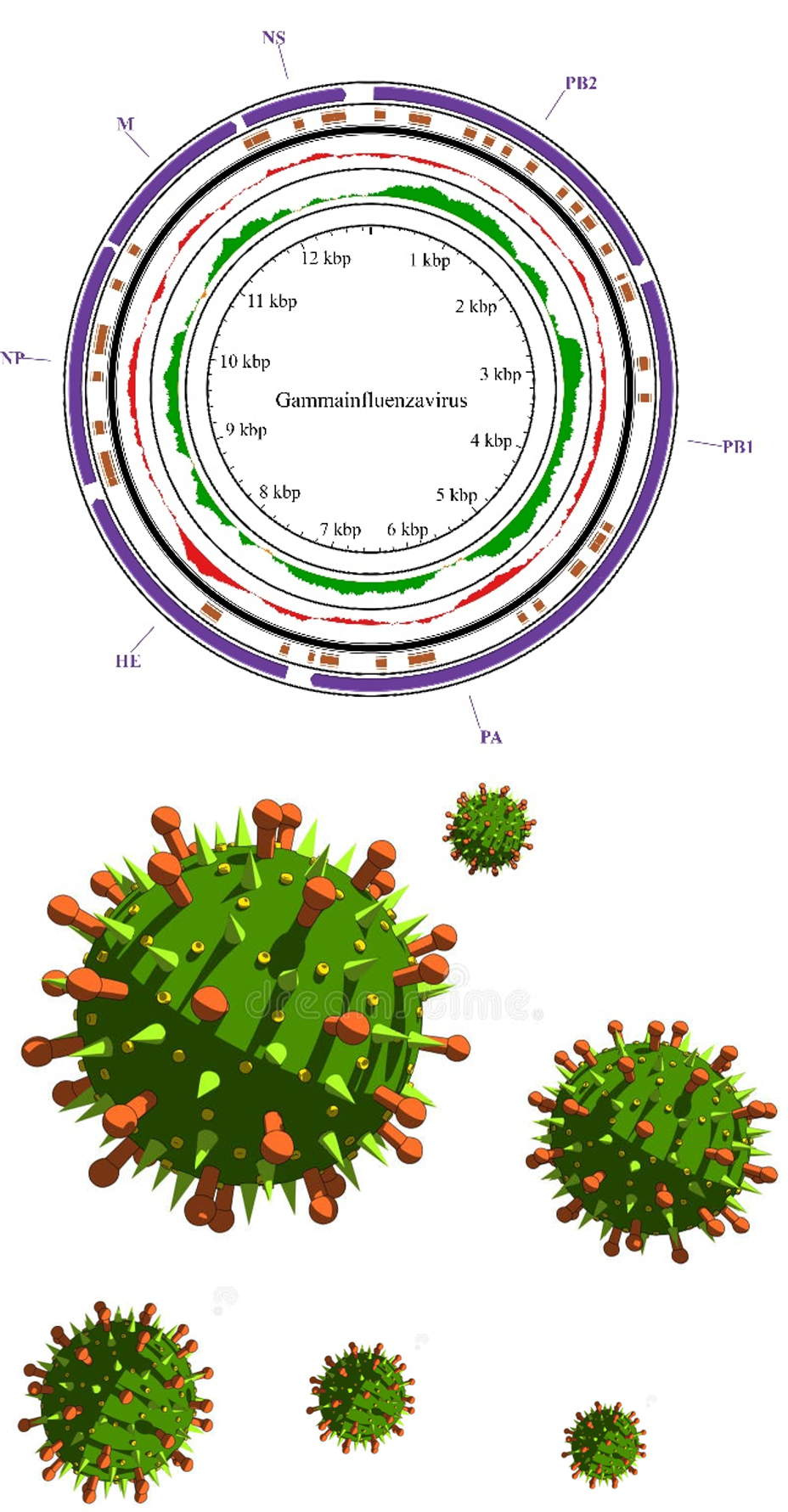Introduction
Hello, welcome back!
Gammainfluenzavirus
Influenza C virus
History
Ancient Times
The Influenza C virus likely has been in existence for several centuries, but due to the lack of precise historical records and the limitations of technological means, its early history has not been well documented.Early 20th Century
Although there were multiple influenza pandemics recorded in the early 20th century, scientists at that time were unable to identify the different types of influenza viruses.1947
The Influenza C virus was first identified by scientists, decades after the Influenza A virus, which was isolated and identified in 1933.Mid to Late 20th Century
During this period, while Influenza A and B viruses were extensively studied due to causing periodic pandemics, research on the Influenza C virus was relatively scarce because the disease it caused was usually milder.Early 21st Century
With the advancements in molecular biology techniques, researchers began to understand the genetic characteristics and evolutionary patterns of the Influenza C virus in greater depth.Recent Decades
In recent years, with the advancement of gene sequencing technologies, scientists have started to use molecular clocks and genomics methods to study the evolutionary history of the Influenza C virus. These studies have revealed that the virus's gene segments have undergone some reassortment events. Although it evolves slowly, it still has some genetic diversity.Genomic Structure
The genome of Influenza C virus is composed of seven distinct RNA segments, each encoding at least one protein.

| CDS | Function |
|---|---|
| PB1 (Polymerase Basic 1) | A key component of the RNA polymerase complex, its primary function is to participate in the replication of viral RNA and transcription of mRNA. |
| PB2 (Polymerase Basic 2) | Another critical component of the RNA polymerase complex, which is responsible for recognizing the cap structure of host cell mRNA, guiding the synthesis of viral mRNA. |
| P3 | The third component of the viral RNA polymerase, involved in the synthesis of viral RNA, crucial to the viral lifecycle. |
| HEF (Hemaglutinin-Esterase-Fusion) | Combines the functions of hemagglutinin, esterase, and fusion protein. It is responsible for recognizing and binding to receptors on the surface of the host cell, mediating virus invasion, release from host cells, and has esterase activity to decompose receptors on the surface of the host cell. |
| NP (Nucleoprotein) | The nucleoprotein wraps around viral RNA segments to form a ribonucleoprotein complex, protecting the RNA from degradation and playing a role in virus replication and assembly. |
| M1 (Matrix Protein 1) | Matrix protein 1 constructs the internal structural framework of the viral particle and interacts with the ribonucleoprotein complex, participating in the assembly of the virus. |
| CM2 | This is the ion channel protein of Influenza C virus, involved in regulating the internal pH of the viral particle, providing necessary conditions for the fusion of the virus with the host cell membrane and release of viral particles. |
Epidemiological Study
1、Epidemiological Surveillance
Monitoring the incidence and trends of Influenza C virus infections to understand how the virus spreads across different populations and regions.
2、Clinical Case Studies
Investigating the clinical presentation of Influenza C virus infections and comparing it to other types of influenza.
3、Virological Genetics Research
Analyzing the genetic sequences of the Influenza C virus to identify genetic mutations and the emergence of new virus strains.
4、Vaccine Development
While research on Influenza C virus vaccines is not as advanced as for Influenza A and B, researchers are working to understand how to prevent Influenza C virus infections more effectively.
5、Immunological Response Studies
Studying the immune response of humans and animals to Influenza C virus and the formation of immune memory.
6、Transmission Pathways and Preventive Measures Research
Investigating the modes of transmission of the virus and how to reduce the risk of infection through public health measures.
Preventive Tips

Personal Hygiene
Wash your hands often, especially after touching public surfaces or objects, using soap and water or an alcohol-based hand sanitizer.Avoid Close Contact
Try to avoid close contact with people who show symptoms of a cold or flu.Avoid Touching the Face
Try to minimize touching your eyes, nose, and mouth with your hands as these are common pathways for viruses to enter the body.Stay Home and Rest
When feeling unwell, stay at home to rest and avoid going to school, work, or other crowded places to reduce virus transmission.Isolation Measures
If possible, try to keep a distance from other household members at home and use separate personal items, such as towels and utensils.Notify Contacts
If you are diagnosed with an infection, inform people you have recently been in contact with so they can also take appropriate precautions.